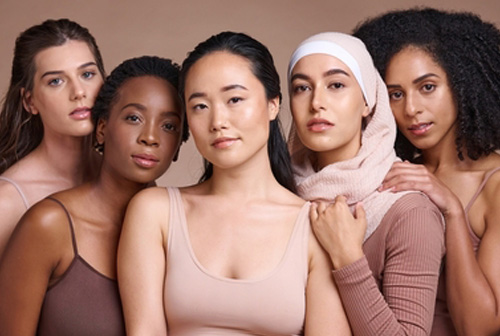The global skincare market is diverse, with regional preferences shaped by local climates, cultural values, and unique skin concerns. From North America’s demand for clean beauty to Asia’s obsession with brightening products, understanding these preferences is key for brands aiming to capture a global market share.
North American consumers are increasingly ingredient-conscious and value efficacy and safety in their skincare products. Multi-functional products that offer hydration, anti-ageing benefits, and sun protection are highly sought after. The clean beauty movement has gained significant traction, with consumers prioritising natural, cruelty-free, and sustainable products. This region also focuses on inclusivity, with brands expanding their offerings to cater to diverse skin tones and types. Transparency and ethical sourcing are essential, as consumers demand products that align with their values.
In South America, the warm climate drives a strong demand for lightweight, hydrating skincare products that are also effective in sun protection. Ingredients like vitamin C are popular for their brightening properties, helping to address concerns like hyperpigmentation and uneven skin tone. The region shows growing interest in products that incorporate local, natural ingredients. Affordability remains a key factor, with consumers looking for high-quality products that don’t break the bank.
European consumers are well-versed in skincare and tend to favour products that balance efficacy and natural ingredients. There is a significant focus on sustainability, with consumers increasingly seeking eco-friendly packaging and ethically sourced ingredients. In Western Europe, minimalism in skincare routines is becoming popular, with multi-use products gaining traction. Anti-ageing, hydration, and sensitivity are common concerns, and consumers are often drawn to products that promote overall skin health rather than just cosmetic enhancements.
Asian skincare, particularly in East Asia, is known for its intricate routines for prevention and maintenance. Brightening products which are often infused with ingredients like niacinamide and hyaluronic acid, are extremely popular. The pursuit of a smooth, radiant complexion is central, with consumers favouring products that enhance the skin’s natural glow. Innovation is key in this region, with Korean and Japanese beauty trends (K-beauty and J-beauty) leading the way in cutting-edge formulations. Lightweight textures and hydrating layers are favoured, reflecting the humid climates of many Asian countries.
In Africa, consumers prioritise products that provide deep moisturisation, particularly those that address dry skin and hyperpigmentation. Rich formulations which include natural ingredients like shea butter and marula oil are particularly popular. Sun protection products are also popular, given the region’s intense sunlight. While affordability is a significant consideration, there is a growing interest in premium products that offer visible results. Local brands with indigenous ingredients are gaining favour, as consumers seek products that are both effective and culturally relevant.
Understanding regional skincare preferences is crucial for brands to connect with consumers globally. While there are overarching trends like the rise of clean beauty and multi-functionality, the nuances of local needs and cultural values play a significant role in shaping consumer choices. Whether it is North America’s focus on sustainability, South America’s need for hydration, Europe’s balance of natural and effective ingredients, Asia’s emphasis on innovation, or Africa’s preference for rich, moisturising products, the global skincare market is as diverse as the consumers it serves.
References
https://www.futuremarketinsights.com/reports/skincare-market
https://www.cognitivemarketresearch.com/facial-moisturizer-market-report

